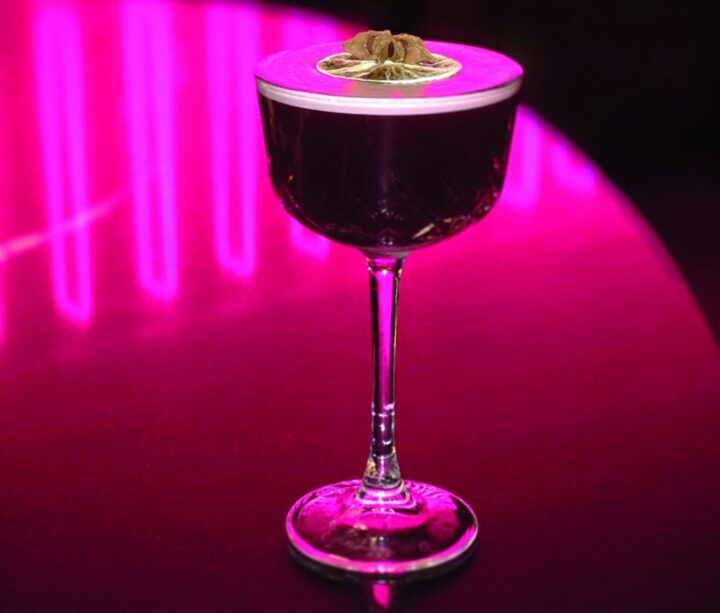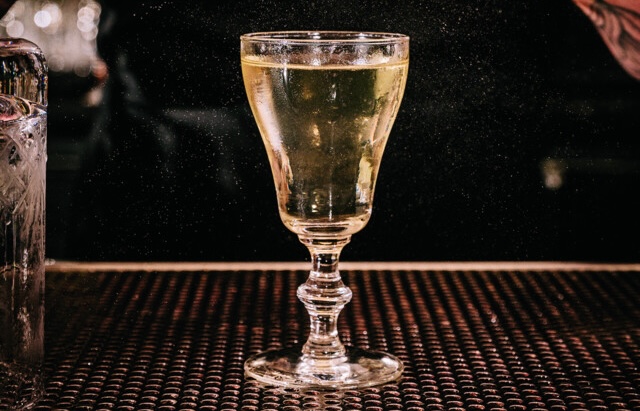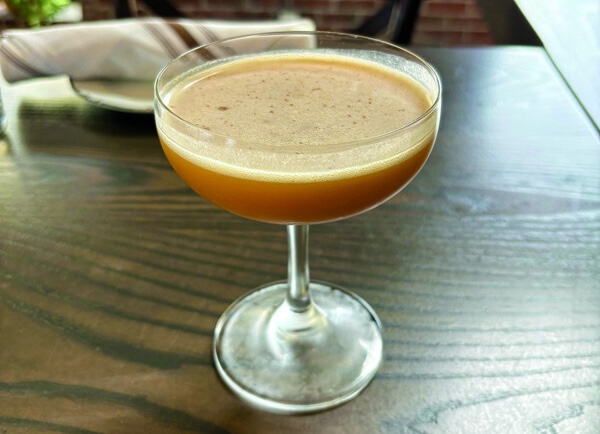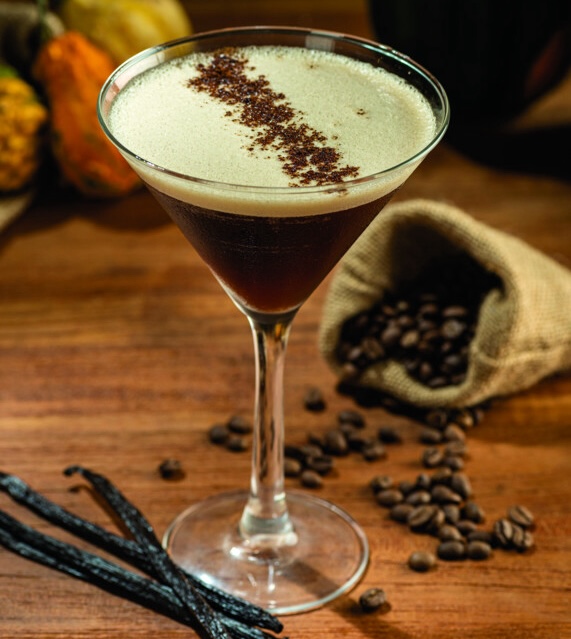
Rum has long had an association with overly sweet cocktails, which is not a total surprise considering it’s a sugarcane-based spirit. But Mike Finn, a bartender at Sparrow in Chicago, also attributes this reputation to how rum was predominantly used behind the bar in the past. “It likely stems from the limited selection of rums that were once available to bartenders— in the past, many rums were either too neutral, requiring a slew of other spirits, liqueurs, syrups, and juices to add complexity, or overly sweetened after distillation, resulting in an unbalanced drink,” he says. “Thankfully, today’s rum market is incredibly diverse, with rums from all corners of the globe offering unique and distinct flavor profiles that can be expertly blended or enjoyed on their own to create a rich and multifaceted flavor experience. With such a wide array of options now available, crafting rum cocktails has become both a more rewarding and intuitive process. This evolution in the rum industry has significantly expanded the possibilities for rum-based drinks.”
Bartenders today are certainly doing their part to showcase rum’s quality and versatility in cocktails, which goes a long way in defying common misconceptions about the spirit as a cheap mixer for syrupy sweet concoctions. “Rum-based cocktails have changed a ton in recent years, and have been changing for a long time,” notes Hailey Donovan, bar manager at Northern Spy in Canton, Massachusetts. “I think ever since the rise of tiki cocktails, rum drinks have become more refined, focusing on new flavors and embracing the rum itself.”
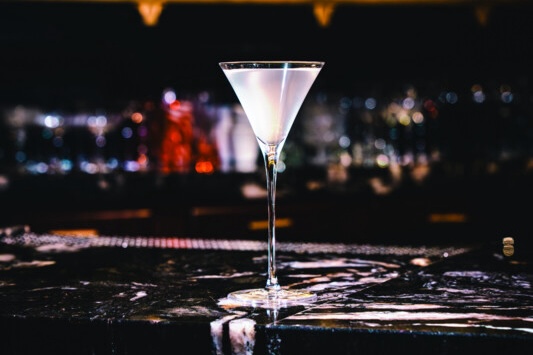
Leveling Up
Although the tiki resurgence that came along after the start of the modern cocktail boom at the early 2000s is no longer at its height, tropical and citrus-based rum drinks will always have a place at the bar. As today’s bartenders continue to embrace cocktail history, elevated takes on the Daiquiri are trending up. “Lime is always a fantastic pairing with rum, and Havana Club is my go-to—it makes a fantastic Daiquiri,” notes Jonathan Adler, beverage director at Shinji’s in New York City. His Daiquiri ($25) blends Havana Club Añejo Blanco rum, fresh lime juice, saline solution, and a house-made Daiquiri syrup comprising coconut water, sugar, and water.
At Mordecai in Chicago, mixology director Corban Kell’s Hundred Dollar Daiquiri ($75) mixes Foursquare 2010 Mark XXI rum, Rest & Be Thankful Long Pond 23 Year 1998 Single Cask rum, Neisson 15-year-old rhum agricole, Le Galion Grand Arôme rum, fresh lime juice, and house-made gomme syrup. Meanwhile, at Nothing Really Matters in New York City, head mixologist Cyllan Hicks’ Hibiscus Daiquiri ($19) comprises equal parts El Dorado 8-year-old rum and Ron Zacapa 23 rum, plus Angostura amaro, house-made hibiscus syrup, and fresh lime juice.
“Taking it back to where rum cocktails all began, the Daiquiri—what was simply a blend of rum, sugar, and lime juice—transformed into a hugely popular beachside drink with a vast selection of flavors and added fruit juices,” notes Bella Campaniello, bartender at Burlock Coast at The Ritz-Carlton in Fort Lauderdale, Florida. “The tiki boom then followed, introducing more tropical and exotic drinks such as the Mai Tai, Jungle Bird, and Painkiller.” Burlock Coast bar manager Robert McPherson’s take on the tiki classic Three Dots & A Dash ($24) features Rhum Clément VSOP and Flor de Caña 12-year-old rums, St. Elizabeth allspice dram, John D. Taylor’s velvet falernum, and pineapple and orange juices, topped with house-made vanilla foam and Angostura bitters.
“While I’d say tiki drinks aren’t the main focus with rum anymore, it’s still fun to play around with new versions of tiki cocktails since crushed ice and tropical flavors are always a safe bet with it,” says Northern Spy’s Donovan. Her Jackie Brown ($16) features equal parts Planteray 3 Stars rum and Xicaru Silver mezcal, plus Giffard Crème de Pamplemousse Rose pink grapefruit liqueur, lime juice, house-made smoked pineapple syrup, and a spritz of Pernod absinthe, while her Mountain Witch ($14) blends equal parts Smith & Cross Traditional Jamaica rum, Campari aperitif, Pierre Ferrand Dry Curaçao, and lemon juice, plus house-made mint syrup. “I think rum cocktails in the past have been associated with being very sweet, but with recent years bringing out more complex flavors, guests are more intrigued to try new rum drinks,” Donovan adds.
Aistis Zidanavicius, bar manager and mixologist at Panamericano Bar in Miami, has personally always been drawn to rum. “Not just for the flavor, but because it comes from the Caribbean and tropical regions that I truly love,” he says. “What makes rum so special and unique is the rich tiki culture that evolved and grew around it. Even though the rum category is evolving and being used in more diverse ways, a lot of its charm and inspiration still comes from those roots in tiki culture and storytelling.” Zidanavicius’ rum-based cocktails lean into fruit flavors while being unique and complex.His Mojito 2.0 ($21), as the name suggests, is an upgrade on the classic drink—a coconut milk-clarified and force-carbonated mix of Brugal 1888 rum, house-made mint syrup, passion fruit purée, and lime juice. He also makes the Sweet Sweet Home ($21), mixing equal parts Brugal 1888 and Ron Matusalem 15-year-old Grand Reserve rums, plus Chainbridge Nocino green walnut liqueur, apple purée, apple juice, plant-based vanilla yogurt, simple syrup, and tartaric acid.
At the Bamboo Room Tiki Bar at Sorry Charlie’s in Savannah, Georgia, beverage manager Chase Lanier says the revival of tiki culture has helped push rum into more mainstream bars and cocktail lounges. “Rum has some traction as being regarded well alongside Bourbon and Scotch as a sipper,” Lanier explains. “The sky is the limit for rum, and the reality is that rum stacks up alongside or beyond any other spirit.”
Hicks of Nothing Really Matters asserts that rum isn’t going anywhere, but that bartenders still have their work cut out for them to make the spirit more popular with consumers. “Most guests are familiar with rum from traveling to the Caribbean or having tried a tiki cocktail here and there, but it isn’t as popular as it should be,” he says. “I’ve worked as an ambassador for two different brands over the past ten-plus years, and I’ve been waiting for rum to have its moment all that time. I do my part by educating, offering tastings, and creating cocktails that don’t necessarily follow tiki traditions but still showcase rum’s versatility—this plays a crucial role in helping expand people’s understanding and appreciation for the spirit.” His Chai Tai ($19), for example, features some of the same types of spices found in tiki cocktails, but is entirely its own, comprising equal parts Chairman’s Reserve Spiced rum and Dona masala chai concentrate, plus house-made orgeat foam.
Although rum owes a lot to its history in tiki cocktails, the spirit is breaking out from that box with the help of bartenders showcasing the spirit in more non-traditional formats. “Rum was once primarily associated with tiki cocktails and culture, but that perception has evolved significantly,” Zidanavicius notes. “In recent years, bartenders have begun experimenting with rum in more unexpected and unconventional ways. Today, you’ll find rum across a wide range of cocktail styles—not just tropical or tiki-inspired ones. Just as other spirits are being used in tiki drinks, rum is now breaking out of its traditional mold and finding a place in everything from stirred classics to modern, spirit-forward creations.”
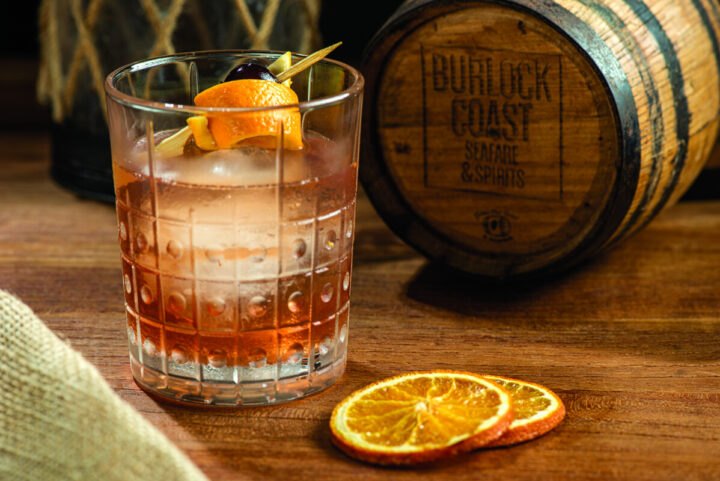
The Spice Of Life
Indeed, many rum enthusiasts today are more excited to push boundaries with their rum cocktails than rest on their laurels. “In my opinion, the cocktail world has a solid grasp on pairing rum with citrus and fruity flavors; however, a more challenging—and often more rewarding—path lies in crafting savory stirred rum cocktails,” Sparrow’s Finn says. “The subtle yet bold flavors of certain rums shine through beautifully in this style. I especially enjoy using agricole-style rums, which bring an intriguing combination of minerality, salinity, and earthiness to the glass.”
He adds that the Sparrow bar team has explored a variety of ways to reinvent stirred drinks with rum, such as with the Pink Tuxedo ($17)—by bartenders Sam Donner and Sean Hodgeman—featuring Rhum J.M Blanc rhum Agricole, Denizen 5-year-old rum, Broker’s gin, Combier Pasteque watermelon liqueur, Dolin Dry vermouth, and a hint of Pernod absinthe; and Finn’s Blanc Negroni ($16), comprising Rhum Clément Canne Bleue and Monymusk Overproof rums, Batavia Arrack van Oosten, Saler’s gentian aperitif, Cocchi Americano aperitif, and The Bitter Truth Grapefruit bitters.
“We use Rhum J.M Blanc in the Pink Tuxedo for its honeyed notes of stewed banana and grilled pineapple, layered with vegetal and mineral undertones, and Clément Canne Bleue as the base of the Blanc Negroni for its deep vegetal character,” Finn adds. “I enjoy using rum as the base for cocktails because of the incredible range of flavors it offers. Unlike spirits with strict regulations, such as Tequila or Bourbon, rum allows for more freedom in flavor integration—it can be made anywhere in the world and so much of it is terroir-driven. A sugar cane plant grown in Martinique could be drastically different than one grown in Japan, causing for a significantly different flavor profile of the final rum. There are also a whole variety of different airborne yeast that could be used in an open fermentation in these two places, causing for different levels of esters present. I find that using or blending rum in cocktails offers a unique perspective, thanks to the natural complexity of the spirit.”
Mordecai’s Kell agrees that the beauty of rum lies in its broad range of styles. “And it’s being treated less like a homogenous spirit today, with cocktails more tailored to specific and regional styles,” he says. “It certainly suits the typical tropical styles you’d associate with the spirit but it goes well beyond that. I imagine that rum cocktails will skew further away from tiki trappings and align more with what rum maybe always should have been: A go-to backbone for any number of styles of cocktail as well as a quality sipper for any occasion.” His bold and stirred Rest and Be Thankful ($35) mixes Rest & Be Thankful Assemblage #01, Hampden Estate 8-year-old, and Hamilton 151 rums, plus a 1900s vintage of Cynar amaro, Giffard Banane du Bresil banana liqueur, and turbinado sugar.
“I think that we used to see rum being featured mainly in tropical-style drinks, but now with the boom of cocktails people are much more open to trying it in other drinks as well,” notes Adler of Shinji’s. “For more spirit-forward rum drinks, using flavors that rum evokes are always fantastic like coffee, banana, and chocolate, as well as herbs.” His Latte Martini ($29) is a complex take on the Espresso Martini: It features Ron Zacapa 23 rum and Mr. Black coffee liqueur, blended with whole coffee beans and strained, and then sous vide along with Henriques & Henriques 10-year-old Sercial Madeira, soy milk, and nigari—this mixture is then combined with Okinawa brown sugar syrup, lactic acid solution, and white soy sauce.
At Northern Spy, Donovan’s Cabana Coffee ($14) blends Planteray 5-year-old rum, Giffard Banane du Bresil and Vanille de Madagascar liqueurs, cold brew concentrate, and cream of coconut. Meanwhile, at Burlock Coast, McPherson’s Sandy Espresso ($20) comprises equal parts Sandy Feet Espresso Spiced rum and Kahlua coffee liqueur, plus espresso and simple syrup. “Rum-based cocktails will always remain popular beach or poolside, while eating Cuban cuisine, or while on vacation in the Caribbean,” Burlock Coast’s Campaniello says. “However, trends have shifted to introducing rum to classic cocktails like the Old Fashioned or Espresso Martini, adding a fun and flavorful twist to an already world famous classic. When using rum, thinking outside of the box is the best way to yield great results.” McPherson’s Smuggler’s Rum Old Fashioned ($22) mixes Appleton Estate Signature Jamaica rum, brown simple syrup, and Angostura and Peychaud’s bitters.
“The beauty—and also the challenge—with rum is that it can be used for any style of drink,” notes The Bamboo Room Tiki Bar’s Lanier. “Enjoy traditional Martinis? Then grab an unaged or lightly aged rum and make an El Presidente. Prefer Old Fashioneds? Even better! Any aged rum will make a delightful Old Fashioned, and the home bartender can tailor the flavor to their liking by playing with different rums, or they can blend different rums together. Be it boozy, sweet, grassy, earthy, fruity, savory, citrus-forward, complex, simple, Prohibition-style, tiki, tropical, or whatever, there’s a rum that will work for any preference. Imagination is the only limit when making rum cocktails.” His A Dapper Mellow ($20) is an applewood-smoked Old Fashioned cocktail comprising a Sorry Charlie’s select pick of Papa’s Pilar Dark rum, Planteray OFTD rum, Pierre Ferrand Cognac, Rittenhouse rye, house-made nutmeg and demerara syrup, Fee Brothers Aztec Chocolate bitters, and Angostura bitters, topped with a toasted marshmallow.
“I’d love to see rum featured more in stirred cocktails,” Sparrow’s Finn says. “While it’s slowly making its way onto more cocktail menus, I’m excited to see how far it can go in the future. Since most people associate rum with citrus and fruit, it’s a bit of a challenge to break that mold. However, I believe that the more rums the bar community can explore, the more they’ll appreciate the vast range of flavors rum has to offer. Trends are certainly leaning toward savory and culinary-inspired cocktails, and in my opinion, there’s no better base spirit for these drinks than rum.”
